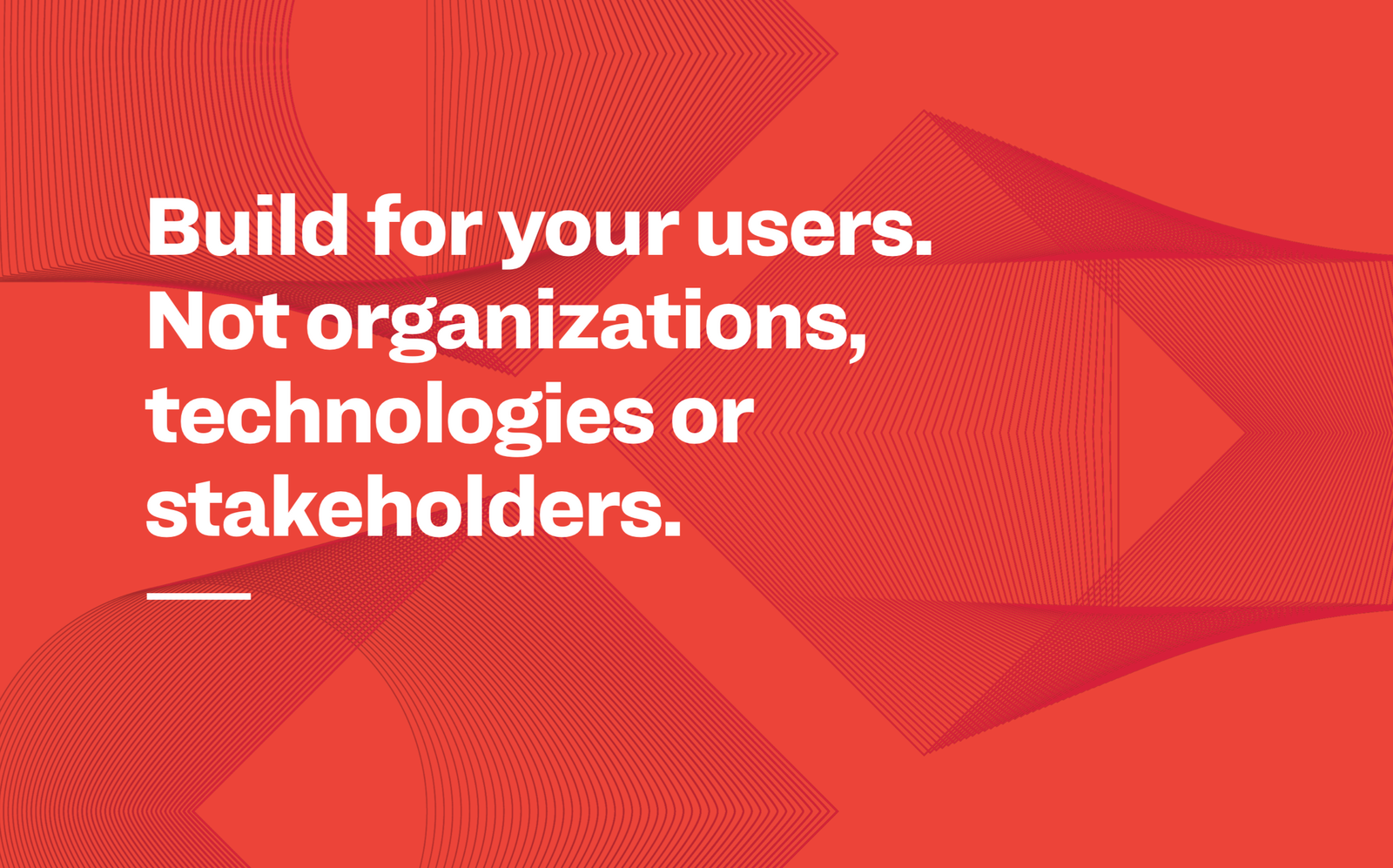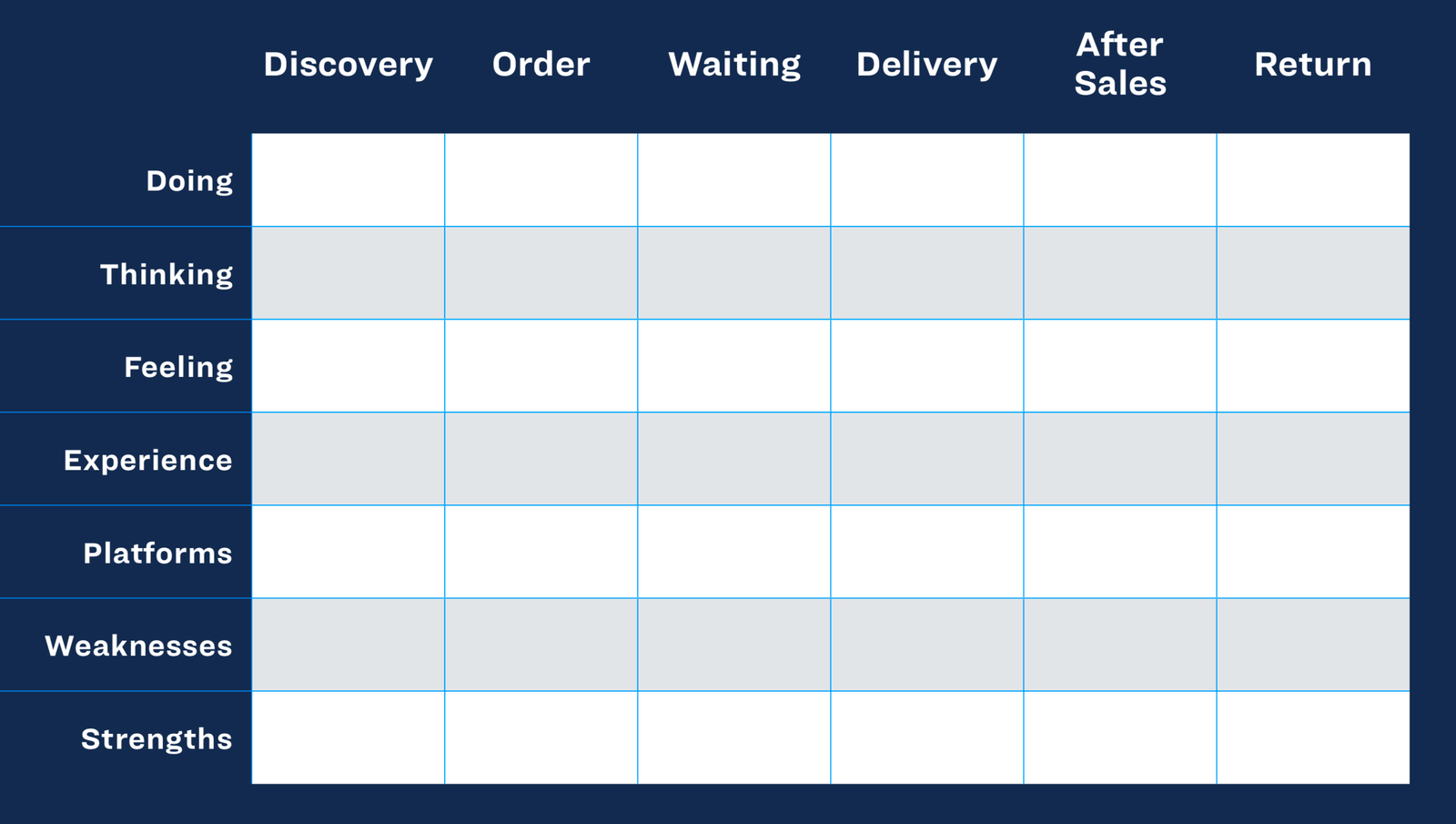blog
Building Digital Strategy with Design Thinking
By Nav Pawera Design March 6, 2019

One of the biggest challenges businesses face today is knowing their audience. Just because an audience can be defined doesn’t mean that you know them. The reason behind this isn’t because businesses don’t want to get to know their audience, it’s because they struggle with how they can do it.
However, the information is out there.
Your audience will tell you how they feel; sometimes you just have to read between the lines. If they’re heading over to your site, but not converting, that’s a big sign that something is wrong. If they do convert but they complain, that’s feedback that you should consider and implement.
What format should you use?
There are three ways to get your product online: By building a website, a mobile app, or by joining a pre-existing platform, all of which have their pros and cons and require some amount of audience understanding in order to make the right choice.
Web
The advantage of having a website is that it will be accessible to everyone who has a browser. Even if the website isn’t optimized for mobile, the website will still be available, it would just be a customer pain point for those viewing on mobile.
Websites are easily discoverable, either through SEO or via search engine ads, meaning customers can find your product with relative ease.
Nowadays, localization is easy thanks to browsers like Chrome that automatically translate pages into the user’s language.
The main problem, however, is that there are a lot of browsers out there. A website needs to be compatible with as many as possible to ensure success. Not only that, but browser software is frequently updated, and users don’t bother to update them regularly. This means that if you build a site, you also need to make sure it is compatible with prior versions. Usually, it’s best practice to go back four or five versions.
Additionally, if there is a web platform out there tailored to the product the user is searching for
(food delivery for example), the user may skip the web search altogether, meaning that your site is no longer as useful.
Mobile Apps
Apps are a far more powerful tool than a website, and thanks to the accessibility of smartphones’ hardware, such as the microphone, camera, and location, user experience can be far better than that of a general website. Log-in is usually a one-time thing and there is a lot more powerful software support available for apps.
There’s also some dedicated real estate on the customer’s phone so it will always be in the forefront of their mind.
Obviously, with greater technology, comes a larger expense, which is why apps may not be the
best choice for smaller businesses. They are also constrained by the rules of the platform provider, and Apple and Android have different rules, meaning that, two different apps usually have to be created. Any updates to the app also have to be run by the support team at Google or Apple too, which can take several days to approve.
In addition to this, for an app to be most effective, users have to grant permissions, which they’re more and more reluctant to do as online privacy becomes more of a public issue. Many users will uninstall an app if it requests too many permissions.
Like with a website, the app also needs to be optimized to cater to a variety of different phone/screen types too, just like websites do with browsers. This adds to the intensity of the project in developing an app. Overall, apps are still very much worth the cost for those whose budget will accommodate them.
Platforms
Platforms are the new kids on the block and can take the form of either a website or an app. Examples are food delivery sites like Deliveroo, or transport providers such as Lyft and Uber.
They allow a small business or individual to advertise their services as part of a wider, trusted service. It’s great for businesses that are just starting out, as marketing is taken care of by the platform, and, if done well, can result in an influx of customers.
The downside is that you are bound by the rules of the platform and they have the final say on what you can and can’t do. They can also come and go very quickly, especially if there are legal complications, for example, oBike in Singapore and Uber, who continuously clash with regulators, causing an abrupt end to the service and business of drivers in certain areas.
If the platform ceases, so does all your customer base, which was the case for 10,000 Uber drivers in Austin who lost their jobs as a result of regulatory clashes
Who are you building the product for?
Once you’ve considered the options for delivering your product, you then need to build it. It’s crucial to remember, though, that the product must be built for users of your service and not for the stakeholders of the business.
How do you identify what they want? Through Customer Journey Mapping.

Customer Journey Mapping is an incredibly effective tool that when used correctly, can transform the way businesses provide products for their customers. The best thing about it is that it really only takes a few hours to put together and allows the whole business to align their thinking.
The key is to find out what customers are thinking and feeling at each stage of their digital experience, if there are any issues, they’ll be highlighted and can be immediately addressed.
The best way to initiate this is to gather everyone in the company involved in the customer experience; sales, customer support, project executors and even the customers themselves, and hold a workshop. For this to work effectively, high-level stakeholders should also take part, CEOs for example, so they can have a better understanding of how customers think since they’re usually not exposed to clientele at this level.
In preparation for this workshop, carry out analytical research on your customers, make zero assumptions and ask them direct questions. Use sites such as survey monkey to see what their pain points are. If your budget doesn’t cover this, set up a Facebook poll to get your feedback. Use your social channels to build a persona of your average customer so that you understand them more. Find out the answers to questions like: How old are they? Are they predominantly male/female? What are their hobbies and interests?
Tools such as Google Analytics will also help you study the behavior of customers once they’re on your site. You can see where they accessed the site from, at what time; you can see which pages are most popular and try to find out why.
Anecdotal research is also vital. Talk to 3-7 users in depth and find out where exactly they struggle in the sales process.
Once you have all this information, the workshop will run much more efficiently. It’ll be easy to highlight each stage of interaction your business has with the customer, and from there, you can capture the information you’re after. This method is far more fluid and can include points such as what they’re thinking/feeling, what platform they used to get to you and what the strengths and weaknesses are with that as you can see in the example below.

Once you have this information filled out, don’t just put it to the side. Turn it into something useful, like an infographic and stick it all around the office so everyone is on the same level of understanding.


